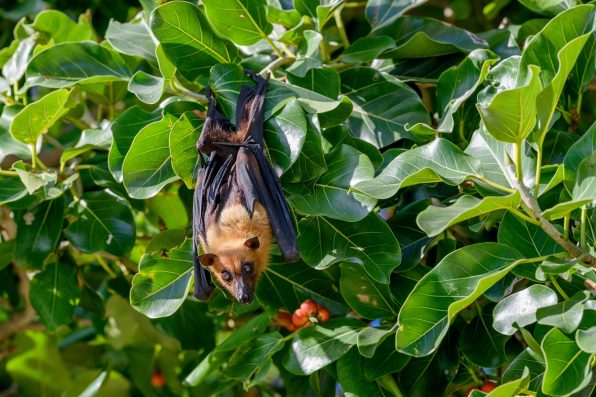Attracting Bats To Your Garden Can Increase Pest Control, Pollination, And Biodiversity In Your Own Backyard

When most people think of bats, their minds often immediately jump to spooky stories and Halloween decorations. But, these nocturnal creatures are not as eerie and villainous as they’re portrayed in folklore.
In reality, bats play a vital role in our ecosystems, and attracting them to your yard can bring plenty of benefits.
From natural pest control to pollination, these winged wonders are worth welcoming – so here’s how and why you should make your garden more bat-friendly.
The Benefits Of Bats
Bats are exceptional pest controllers. Did you know that one single bat can consume thousands of insects in just one night? These pests include mosquitos, beetles, and moths.
This natural form of pest control reduces the need for chemical pesticides on your property, making your garden a healthier place for both plants and people.
Additionally, some bat species are crucial pollinators – contributing to the growth of both fruits and flowers. So, their presence supports biodiversity and helps maintain a balanced ecosystem.
Creating A Bat-Friendly Environment
If you want to attract bats to your yard, it’s essential to understand their basic needs: food, water, shelter, and safety.

Alexey Seafarer – stock.adobe.com – illustrative purposes only, not the actual bat
First, in terms of food, you can encourage a healthy insect population by planting a variety of flowers and shrubs that attract insects. Night-blooming plants like evening primrose and moonflower are particularly appealing, as they attract nocturnal insects.
Next, bats will need water for drinking and feeding. Adding a small pond, birdbath, or even a water fountain to your garden can provide a necessary hydration spot for them.
These creatures will need some shelter options, too. Bats roost in trees, under eaves, and in bat houses. If you’re interested in adding a bat house to your yard, install it in a quiet, shaded area to offer bats the perfect daytime roosting spot.
Just be sure the bat house is placed at least 15 feet off the ground to keep it safe from predators.
Lastly, you will want to minimize pesticide use on your property to ensure a safe environment for bats. Pesticides not only reduce their food supply but can also harm bats directly.
Building A Bat House: DIY Or Buy?
You don’t have to run out and buy a bat house to reap the benefits of these creatures in your garden. Rather, building your own can actually be a rewarding DIY project.
Keep in mind that you should choose a design with a rough interior surface, which will allow bats to cling to it more easily. Additionally, a larger bat house will be able to accommodate more bats in your yard and offer better protection.
Or, for those less inclined to DIY, there are plenty of bat houses readily available for purchase online or at garden centers.
Bats Aren’t As Scary As They Seem
Many people harbor misconceptions about bats, fearing they carry disease or will get tangled up in their hair. The truth is that bats are shy creatures that try to avoid human contact.
By taking some simple precautions, such as not handling them directly, you can enjoy the benefits they bring without any risks.
At the end of the day, attracting bats to your yard is also just one part of creating a balanced garden ecosystem. You can complement their presence with other natural allies like birds, bees, and beneficial insects.
A diverse habitat will not only enhance your garden’s beauty but also ensure it thrives year-round.
Sign up for Chip Chick’s newsletter and get stories like this delivered to your inbox.
More About:Gardening